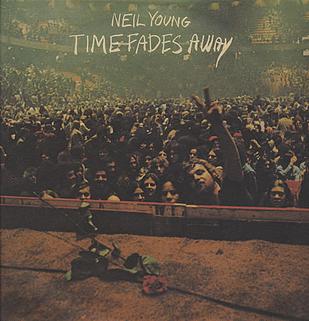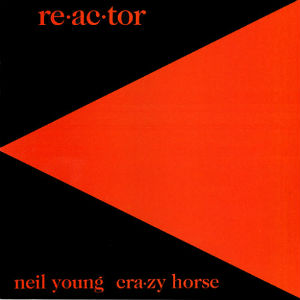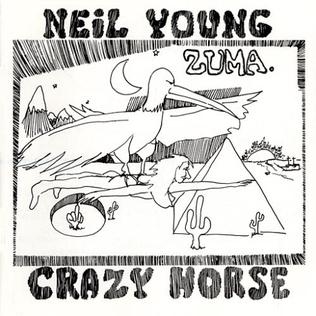
Neil Percival Young is a Canadian and American singer and songwriter. After embarking on a music career in Winnipeg in the 1960s, Young moved to Los Angeles, joining the folk-rock group Buffalo Springfield. Since the beginning of his solo career, often with backing by the band Crazy Horse, he has released critically acclaimed albums such as Everybody Knows This Is Nowhere (1969), After the Gold Rush (1970), Harvest (1972), On the Beach (1974), and Rust Never Sleeps (1979). He was also a part-time member of Crosby, Stills, Nash & Young, with whom he recorded the chart-topping 1970 album Déjà Vu.

After the Gold Rush is the third studio album by the Canadian-American musician Neil Young, released in September 1970 on Reprise Records. It is one of four high-profile solo albums released by the members of folk rock group Crosby, Stills, Nash & Young in the wake of their chart-topping 1970 album Déjà Vu. Young's album consists mainly of country folk music along with several rock tracks, including "Southern Man". The material was inspired by the unproduced Dean Stockwell-Herb Bermann screenplay After the Gold Rush.

Crazy Horse is an American rock band best known for their association with the musician Neil Young. Since 1969, 15 studio albums and several live albums have been billed as being by Neil Young and Crazy Horse. They have also released six studio albums of their own between 1971 and 2009.

Everybody Knows This Is Nowhere is the second studio album by Canadian-American musician Neil Young, released in May 1969 on Reprise Records, catalogue number RS 6349. His first with longtime backing band Crazy Horse, it emerged as a sleeper hit amid Young's contemporaneous success with Crosby, Stills, Nash & Young, ultimately peaking at number 34 on the US Billboard 200 in August 1970 during a 98-week chart stay. It has been certified platinum by the RIAA.

On the Beach is the fifth studio album by Canadian-American musician Neil Young, released by Reprise Records in July 1974. The album is the second of the so-called "Ditch Trilogy" of albums that Young recorded following the major success of 1972's Harvest, whereupon the scope of his success and acclaim became apparent; On the Beach was inspired by his feelings of retreat, alienation, and melancholy in response to this success.

Weld is a live album by Neil Young and Crazy Horse released in 1991, comprising performances recorded on the tour to promote the Ragged Glory album. It was initially released as a limited edition three-disc set entitled Arc-Weld, with the Arc portion being a single disc consisting in its entirety of a sound collage of guitar noise and feedback. Arc has since been released separately.

Rust Never Sleeps is the tenth album by Canadian American singer-songwriter Neil Young and his third with American band Crazy Horse. It was released on June 22, 1979, by Reprise Records and features both studio and live tracks. Most of the album was recorded live, then overdubbed in the studio, while others originated in the studio. Young used the phrase "rust never sleeps" as a concept for his tour with Crazy Horse to avoid artistic complacency and try more progressive, theatrical approaches to performing live.

Time Fades Away is a 1973 live album by Canadian-American musician Neil Young. Consisting of previously unreleased material, it was recorded with the Stray Gators on the support tour following 1972's highly successful album Harvest. Due to Young's dissatisfaction with the tour, it was omitted from his catalogue and not released on compact disc until 2017. The album is the first of the so-called "Ditch Trilogy" of albums that Young recorded following the major success of Harvest, whereupon the scope of his success and acclaim became so apparent that Young subsequently experienced alienation from his music and career.
Danny Ray Whitten was an American guitarist and songwriter, best known for his work with Neil Young's backing band Crazy Horse, and for the song "I Don't Want to Talk About It", a hit for Rod Stewart and Everything but the Girl.

Re·ac·tor is the twelfth studio album by Canadian folk rock musician Neil Young, and his fourth with American rock band Crazy Horse, released on November 2, 1981. It was his last album released through Reprise Records before he moved to Geffen for his next five albums.

Zuma, the seventh studio album by Canadian/American musician Neil Young, was released on Reprise Records in November 1975. Co-credited to Crazy Horse, it includes "Cortez the Killer", one of Young's best-known songs.
"Danger Bird" is a song written by Neil Young. It was first released on his 1975 album with Crazy Horse, Zuma. A live version was also released on the 1997 album Year of the Horse.

Homegrown is the 42nd studio album by Canadian-American Neil Young. It was released on June 19, 2020, by Reprise Records. The album consists of material recorded between June 1974 and January 1975. The album was recorded after the release of On the Beach and before the sessions for Zuma. Like those two albums, much of the material was inspired by Young's relationship with actress Carrie Snodgress, which was deteriorating in 1974. The album was compiled and prepared for release in 1975. Instead, Tonight's the Night was released in its place, and Homegrown remained unreleased for 45 years. It was finally set for release as part of Record Store Day 2020, amid Neil Young's ongoing Archives campaign. Its release was again delayed by Record Store Day's postponement due to the COVID-19 pandemic, before finally seeing release on June 19.

Frank "Poncho" Sampedro is an American retired guitarist and member of the rock band Crazy Horse, known mainly for his longtime collaboration with singer-songwriter Neil Young. Sampedro has played and recorded with Young in many other configurations aside from Crazy Horse and earned co-writing credits on several Young songs. Out of all Young's musical collaborators, Sampedro has perhaps proven the most adept at working with the mercurial artist.
"The Loner" is a song by Neil Young, his first solo single. It was released on his solo debut album in November 1968, and then an edited version as his debut solo single three months later on Reprise Records. It missed the Billboard Hot 100 chart completely, but over time has become a staple of his performance repertoire. Both it and "Sugar Mountain", its B-side recorded live at the Canterbury House in Ann Arbor, Michigan, were released on album together for his 1977 compilation, Decade.

Americana is the 33rd studio album by Canadian / American musician Neil Young, released on June 5, 2012. The album was Young's first collaboration with backing band Crazy Horse since their 2003 album, Greendale, and its associated tour.
"The Old Laughing Lady" is a song written by Neil Young that was first released on his 1968 debut solo album Neil Young.
"Crime in the City " is a song written by Neil Young that was first released on his 1989 album Freedom, although Young had performed longer versions in concert earlier. It was not released as a single but reached number 34 on the Billboard Magazine Mainstream Rock Tracks chart. It is a lengthy song, with a released version of almost nine minutes, but earlier versions were more than twice as long. It has been characterized as a document of moral rot in urban regions of the United States in the late 1980s.

"Everybody Knows This Is Nowhere" is a song written by Neil Young that was originally released as the title track of his 1969 album with Crazy Horse, Everybody Knows This Is Nowhere. The song was written earlier, and a different version was originally considered for Young's 1968 solo debut album Neil Young

Odeon Budokan is a live album by Canadian-American musician Neil Young, released on September 1, 2023, on American record label Reprise Records.















